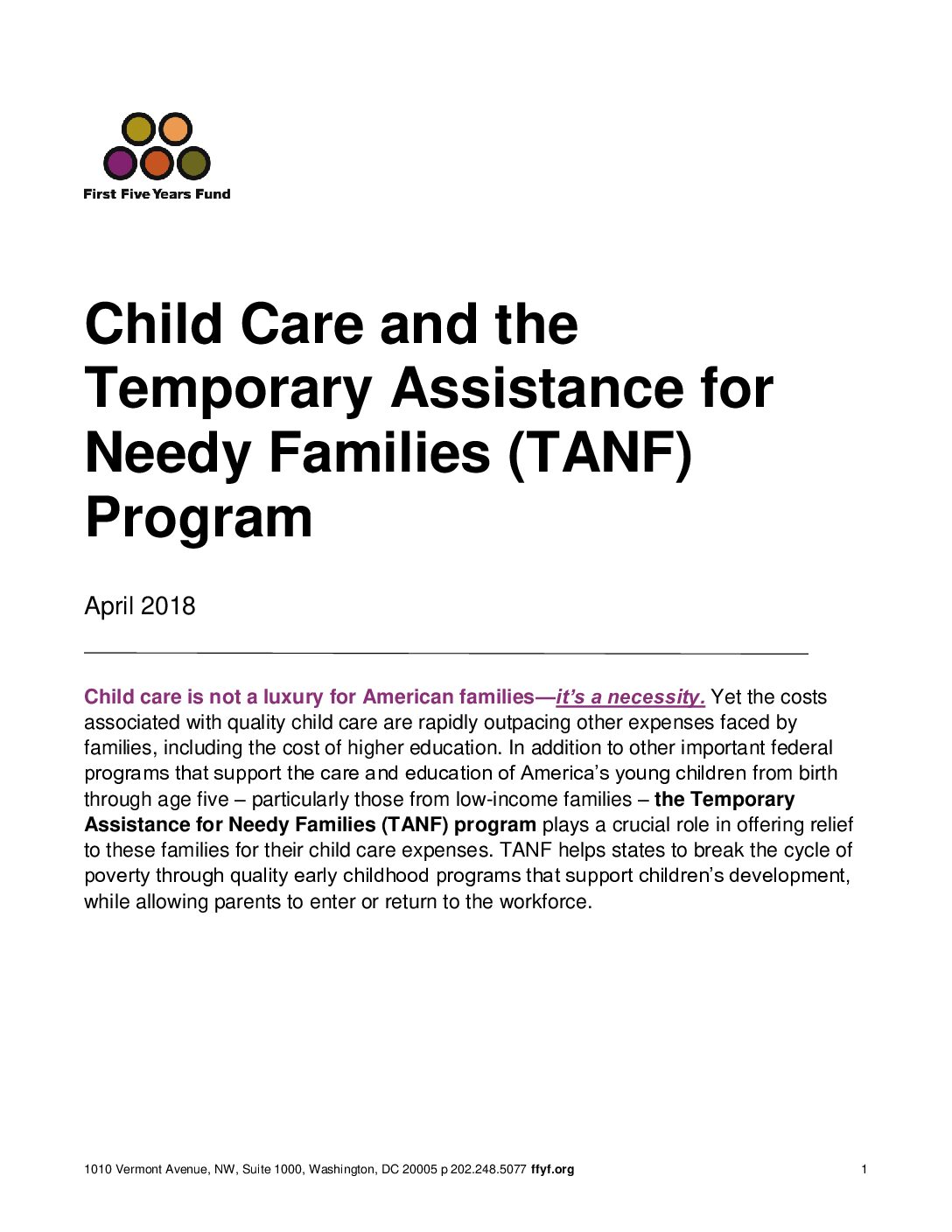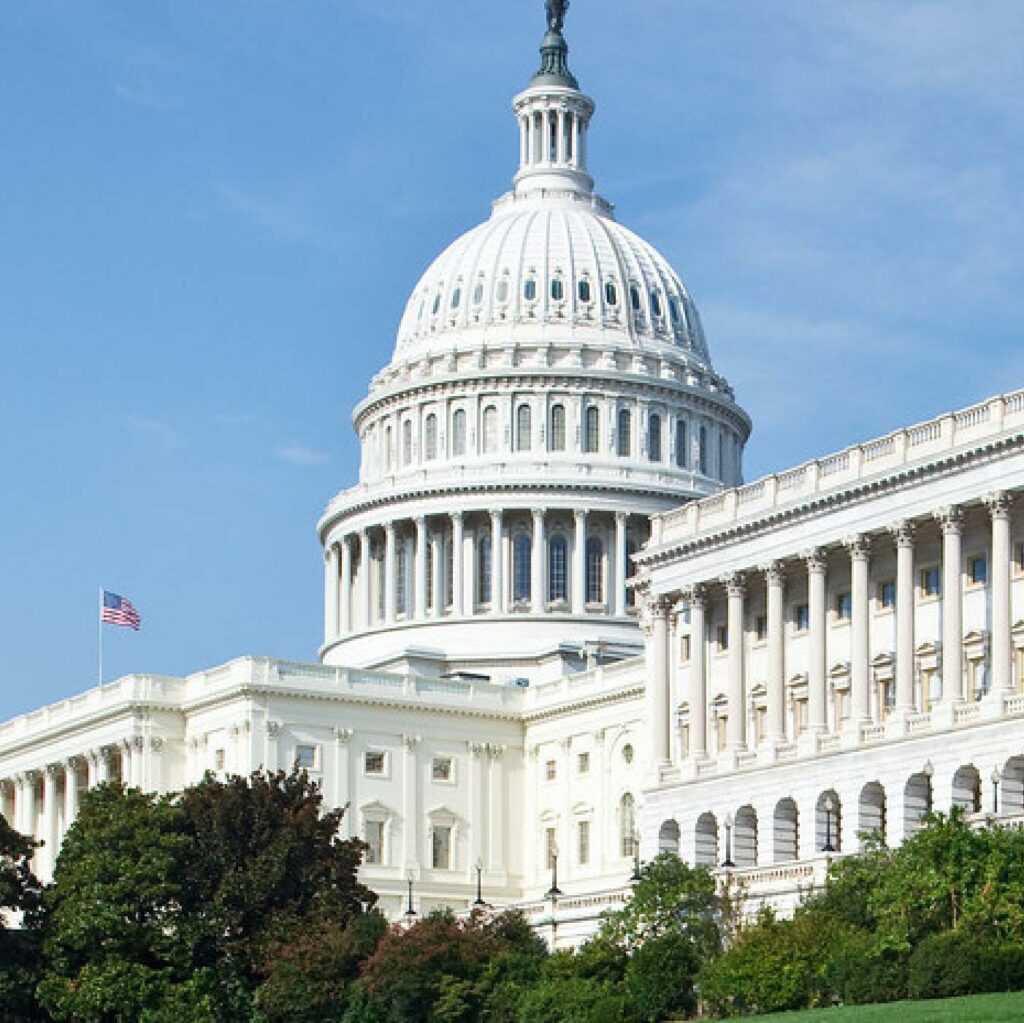Child Care and the Temporary Assistance for Needy Families (TANF) Program

Child care is not a luxury for American families—it’s a necessity. Yet the costs associated with quality child care are rapidly outpacing other expenses faced by families, including the cost of higher education. In addition to other important federal programs that support the care and education of America’s young children from birth through age five – particularly those from low-income families – the Temporary Assistance for Needy Families (TANF) program plays a crucial role in offering relief to these families for their child care expenses. TANF helps states to break the cycle of poverty through quality early childhood programs that support children’s development, while allowing parents to enter or return to the workforce.
The Importance of Quality Child Care
The overwhelming research shows that increasing access to a high-quality early childhood education is one of the most effective investments for American families and communities, generating outcomes that are proven to set children up to succeed in school and become productive adults later in life. Children who face adversity in the first years of life, especially those living in poverty, are at increased risk for experiencing damage to their brain architecture, which can lead to lifelong problems in learning, behavior, and physical & mental health. Prevention and intervention through high-quality early learning and care provides the support children need to build a foundation for school success, as well as their health, cognitive, social and emotional development.
Unfortunately, less than half the children from low-income families have access to the high-quality early childhood programs that could dramatically improve their opportunities for a better future. For families whose income level makes them eligible to receive support through TANF, this expense is wildly out of reach.
Overview of TANF
TANF was created in 1996 to replace Aid to Families with Dependent Children (AFDC), which provided welfare to low-income families with children beginning in 1935. Since 1996, federal regulations and guidance have allowed TANF funds to support or expand a broad range of child care and early education initiatives in states. While states have great flexibility in how they decide to spend their block grant funds, they must do so consistent with the purposes of the law. These purposes include:
- providing assistance to needy families so that children may be cared for in their own homes or in the homes of relatives;
- ending the dependence of needy parents on government benefits by promoting job preparation, work, and marriage;
- preventing and reducing the incidence of out-of-wedlock pregnancies and establish annual numerical goals for preventing and reducing the incidence of these pregnancies; and
- encouraging the formation and maintenance of two-parent families.
TANF Funds for Early Care and Education
Under current law, a state has the flexibility to utilize TANF funds to support low-income families through increased access to child care and early education opportunities. A state can transfer up to 30 percent of its TANF funds to the Child Care and Development Block Grant (CCDBG), which provides child care assistance for disadvantaged families and funds child care quality initiatives. Through regulatory guidance, HHS has specified that states also can spend TANF funds for early education. This funding is intended to supplement, not supplant, initiatives underway in a state/territory to broaden educational supports including child care, pre-kindergarten, Head Start, and kindergarten.
States across the nation are working to ensure more children, especially those from low-income families, have access to high-quality early learning and care from birth through age five. Much of the progress at the state and local levels has been made possible through strong partnerships with the federal government aimed at expanding access and increasing quality. Federal support for early learning largely funds Head Start/Early Head Start, the Child Care and Development Block Grant, and the Preschool Development Grant program. TANF plays a particularly important role as a funding source that can be used for child care and early education programs to serve low income families. Recognizing the importance of child care and early education, all states and the District of Columbia spend some amount of TANF funding on these programs.
- Nationally, 24 percent, or almost $7.5 billion, of state TANF spending and transfers went to child care and early education programs in FY 2016.
- States spent 16.6 percent, or $5.12 billion, on child care and 7.5 percent, or $2.31 billion, on pre-kindergarten or Head Start programs.
- Forty-Nine states and the District of Columbia used some amount of TANF funding to pay for child care programs, and more than half of states used part of TANF to support early education and Head Start.
What Congress Can Do
As Congress considers reauthorization of TANF, there is a significant opportunity to recognize the unmistakable role quality early childhood experiences play in helping to break the cycle of poverty by:
- reinforcing the connection between federal dollars and quality programs including expanding connections to CCDBG for all TANF funded child care;
- identifying ways to sustain child care funding in order to support TANF families;
- protecting the states’ ability to use federal funds to strengthen their own early care and learning initiatives;
- ensuring states are supplementing rather than supplanting their own spending with TANF dollars. States cannot use the flexibility afforded in the federal TANF grant to replace state spending for low income families.
Subscribe to FFYF First Look
Every morning, FFYF reports on the latest child care & early learning news from across the country. Subscribe and take 5 minutes to know what's happening in early childhood education.




